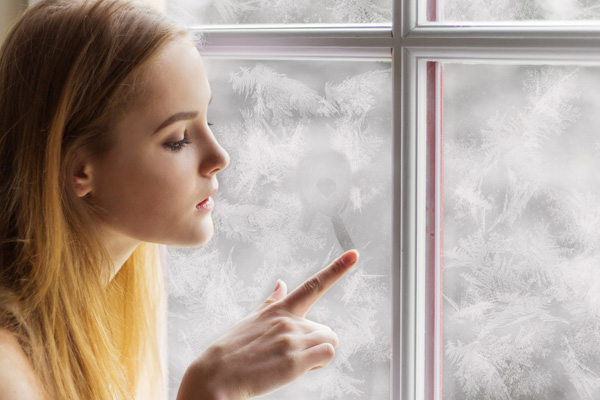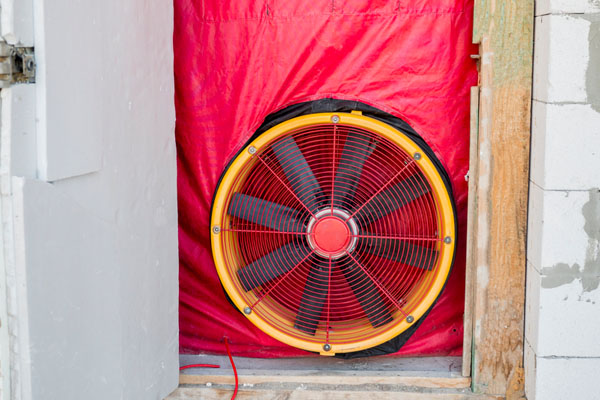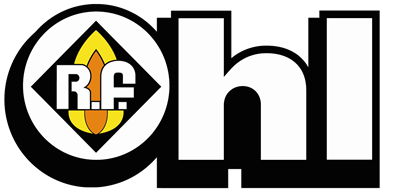Can Leaky Windows Impact My Home’s Heating Efficiency?

Our heating systems are at the forefront during the cold winter months, ensuring our homes remain snug and warm. Yet, subtle gaps and cracks in windows can undermine this effort, discreetly letting the warmth fade away. Though air leakage is a widespread issue, it frequently goes unnoticed. The following article by R.F. Ohl will explore the repercussions of these elusive window leaks on home heating and emphasize the importance of tackling them without delay.
How Does Air Leakage From Windows Influence Your Home’s Heating?
Contents
To truly grasp the significance, you must understand the broader implications of drafty windows on home heating. Not only do windows come into play, but similar principles also pertain to leaky doors, spaces linking your living area to attics or crawlspaces, fireplaces, electrical outlets, and beyond.
The Ramifications of Air Leakage on Your Energy Expenses

Drafty windows allow warmth to escape, causing the heating system to work longer to maintain desired temperatures, leading to higher energy bills. This extra strain can hasten wear and tear, resulting in more frequent, costly repairs and potentially shortening the system’s lifespan. Additionally, persistent air leaks can cause moisture intrusion, potentially weakening your home’s structure and leading to significant repair costs. Addressing this issue promptly can prevent these financial impacts.
The Concern with Drafty Windows & Air Leakage
The natural tendency for heat is to move from warmer areas to cooler ones. This is a fundamental scientific principle visible in everyday life. Consider placing an ice cube under direct sunlight; it won’t be long before it melts. Similarly, if you open a window during a hot summer day, the cool air inside will quickly become warm. During winter, this principle means that the inviting warmth inside can easily seep out, leaving the indoors uncomfortably cold. Maintaining a closed window is crucial, but drafty windows can complicate this, challenging our ability to regulate indoor temperatures.
How Can You Identify Air Leakage?

Uncovering air leakage in your home is crucial. Here, we delve into techniques to pinpoint whether your windows might betray your home’s insulation.
- Visual Examination: Conduct a thorough walk-through of your home, inspecting each window for gaps or breaches in the seals and documenting areas needing attention. Also, check door perimeters, appliances, pipes, electrical outlets, attic entrances, and baseboards for potential leaks.
- Building Pressurization Test: To detect indoor air movement, turn off all air-circulating devices and observe drafts on windy days. Using an incense stick can help identify air leaks by showing disturbances in the smoke flow.
- Blower Door Test: This specialized method involves HVAC professionals fitting a blower onto a doorway to create a pressure differential, drawing air through leaks. This allows for quick identification and quantification of air loss, providing a comprehensive understanding of the issue.
Guidelines for Addressing Air Leaks
While homeowners can undertake basic sealing measures, some circumstances warrant a more refined touch. Here’s a breakdown:
- Basic Sealing Techniques: Using caulk is a handy solution for minor gaps around windows. A foam sealant might be the more fitting option if you face larger breaches.
- Advanced Repairs: More pronounced damages necessitate advanced interventions like insulation enhancement, sealing of external walls, and ductwork mending. These tasks aren’t just about filling gaps — they’re about preserving the structural and functional integrity of the home.
- Seeking Professional Help: While DIY measures can address some issues, the complexity of extensive repairs demands the skill set of a seasoned professional. These experts, equipped with specialized tools, can expedite the repair process. More importantly, their expertise ensures the efficacy and longevity of the repairs, ensuring a warmer, more energy-efficient home for the long haul.
Key Spots to Focus on for Effective Air Sealing
- Doors and Windows: Over time, the seals that border these fixtures can degrade or might be improperly installed from the outset. These lapses often result in cold drafts during winter months. Ensuring these are tightly sealed is imperative for consistent indoor comfort.
- Switch Plates and Electrical Outlets: At first glance, switch plates and outlets might appear perfectly aligned with walls. However, due to wall irregularities, tiny gaps can form. Using gaskets can be an effective solution to seal these subtle openings.
- Plumbing and Wiring: The infrastructure for plumbing, wiring, and duct systems often perforates walls and ceilings. The surrounding regions of these penetrations should be meticulously sealed, employing materials that don’t pose any health risks.
- Roof and Attic: Temperature fluctuations can cause the roof’s materials to expand and contract, potentially resulting in openings. These gaps can invite both water during wet seasons and consistent air leaks. Regular professional inspections of the roof and the underlying attic insulation are advisable.
- HVAC Air Ducts: These conduits are pivotal in circulating air throughout your home. When they become compromised, notable temperature disparities can manifest across different rooms. Rely on professionals to detect and rectify these leakages, ensuring optimal airflow and uniform temperature distribution.
The Advantages of Optimal Air Sealing
Understanding the myriad benefits of air sealing can motivate homeowners to take this essential step. Here are the compelling reasons:
- Enhanced Energy Efficiency: At its core, air sealing is about minimizing energy wastage. By addressing leaks, you stabilize the indoor climate, reducing the demands on your HVAC system. This means your system operates less frequently while still achieving optimal comfort levels.
- Diminished Energy Expenditure: A direct offshoot of improved efficiency is reduced energy usage. This translates to lighter utility bills month after month, culminating in significant yearly savings.
- A Green Initiative: Every kilowatt-hour saved is a step toward environmental conservation. Reduced energy consumption means diminished greenhouse gas emissions, mitigating our contributions to global warming.
- Augmented Indoor Comfort: Beyond the tangible savings, air sealing bestows an intangible yet invaluable benefit: enhanced comfort. With a stable indoor temperature, balanced humidity levels, and improved air quality, your home transforms into a haven of comfort and well-being.
In Summary
The air leakage issue, often unseen but ubiquitously felt, plagues many households. Taking proactive measures to tackle this concern can lead homeowners to a realm of consistent comfort and energy efficiency. Engaging with seasoned professionals is a wise choice in this endeavor. Their expertise ensures thorough inspections and the deployment of enduring remedies. Their assistance makes the path to an airtight home swift and cost-effective.
Contact R.F. Ohl for Your HVAC Needs

R.F. Ohl is a leading name in superior heating and cooling services in Northeastern PA. Our esteemed team, made up of certified technicians, is dedicated to delivering exceptional HVAC tune-ups, repairs, installations, and replacements. Their vast expertise ensures your HVAC system is treated with utmost care and professionalism.
At R.F. Ohl, we not only promise competitive pricing for the Northeastern PA region, but our comprehensive maintenance services also aim to boost indoor comfort, enhance energy efficiency, and reduce heating and cooling expenses. If the need arises for HVAC repairs or even a system overhaul, trust R.F. Ohl to recommend the ideal solution for your home, always mindful of your budget. We stand by our work, guaranteeing satisfaction to underscore our commitment to excellence.
For a seamless HVAC experience and a home that’s comfortable year-round, reach out to R.F. Ohl. We’re just a call away and proudly offer complimentary in-home assessments.
Click here to contact us today or give us a call at (610) 377-1098 if you have any questions. Click the link to view our service area.
Related Articles: